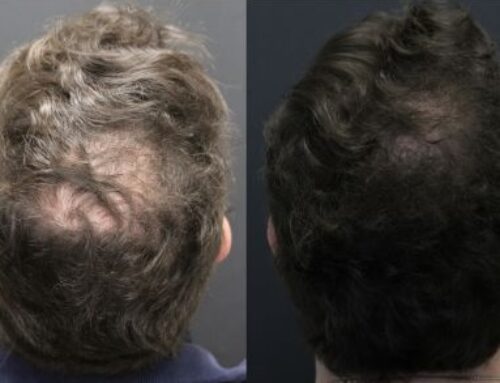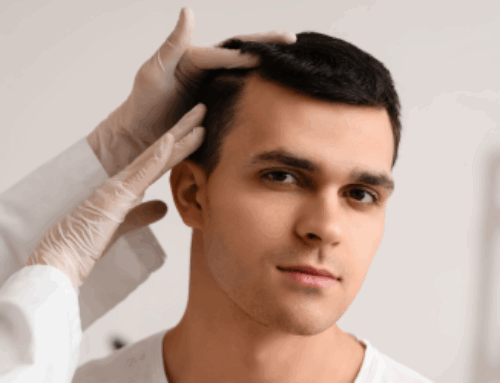Hair loss is something millions of people experience, and understandably, it can affect not just how you look but how you feel about yourself. As a medical professional, I often get asked about new treatments that promise fuller hair without surgery or medication. One of the most talked-about options right now is red light therapy (RLT).
This article will break down what red light therapy is, how it works, and whether it actually helps with hair growth based on real science, not just marketing claims. Whether you’re just noticing a bit of thinning or exploring alternatives to traditional treatments, I’ll walk you through what you need to know.
Understanding Hair Loss: What’s Really Going On?
Hair loss can be caused by many things. The most common type is androgenetic alopecia, known as male or female pattern baldness. But other causes include:
- Hormonal changes (like postpartum or menopause)
- Chronic stress
- Medical conditions (such as thyroid problems or autoimmune diseases)
- Poor nutrition
- Medications
To understand how treatments like red light therapy might help, it’s important to understand how hair grows. Hair follicles go through cycles of growth, rest, and shedding. When these cycles are disrupted, hair can thin or fall out. Over time, some follicles may shrink or stop producing hair altogether.
What Is Red Light Therapy?
Red light therapy, also called low-level laser therapy (LLLT), uses specific wavelengths of red and near-infrared light to stimulate cells in the scalp. Think of it as giving your hair follicles a boost of energy.
The light penetrates the skin and targets the mitochondria, the energy center of your cells. This process, called photobiomodulation, helps improve blood flow, reduce inflammation, and potentially “wake up” sluggish hair follicles to re-enter the growth phase.
Does Red Light Therapy Really Work?
Several clinical studies have looked at red light therapy for hair loss, especially androgenetic alopecia. Results are promising:
- Increased hair density and thickness
- Slower hair shedding
- Improved scalp coverage in treated areas
Some studies even show results comparable to minoxidil with fewer side effects. It’s also FDA-cleared for both men and women with pattern hair loss—another sign that it’s backed by science, not just hype.
That said, it’s not a miracle cure. Results can vary based on the stage of hair loss, consistency of use, and other health factors.
How to Use Red Light Therapy for Hair Growth?
You’ve probably seen ads for laser caps, LED helmets, handheld combs, and clinical light therapy treatments. These devices may look different, but they all work on the same basic principle: delivering low-level red or near-infrared light to your scalp to stimulate hair follicles.
Types of Devices
- Laser Caps and Helmets: These are popular for at-home use. You simply place the cap or helmet on your head, press a button, and let it run. They often provide even, full-scalp coverage.
- Combs and Brushes: These handheld tools require manual movement and are best for smaller areas of thinning hair.
- In-clinic treatments: Medical spas and dermatology clinics may use stronger, professional-grade devices that provide a higher intensity of light.
Recommended Usage Guidelines
To get the best results, follow these general guidelines:
- Frequency: Use your device 3 to 5 times per week
- Duration: Each session should last 10 to 30 minutes, depending on the device and your treatment plan
- Timeline: Most users begin to notice early changes after about 3 to 6 months of consistent use. For others, it may take longer
Consistency is key. This isn’t a one-and-done treatment, it’s more like a fitness routine for your scalp. Just like going to the gym, skipping sessions or stopping too soon can slow your progress or cause your results to fade.
Think of it as a long-term investment in your hair health. The follicles need ongoing stimulation to stay active and responsive.
Who Can Benefit the Most?
Red light therapy works best for people in the early stages of hair thinning. It can help slow or reverse mild to moderate loss, but it’s less likely to regrow hair on areas that are completely bald.
It’s suitable for both men and women and works well for:
- People with pattern hair loss
- Those experiencing postpartum shedding
- Individuals with thinning due to stress or hormonal shifts
If you have an underlying medical condition or are taking medications, it’s best to talk to a doctor first.
Are There Any Risks or Side Effects?
One of the biggest advantages of red light therapy is its excellent safety profile.
Most people experience:
- No pain
- No downtime
- Mild warmth or tingling during use
Rarely, some people report slight scalp irritation or redness, but these symptoms usually go away quickly. Also, red light therapy does not cause cancer, nor does it damage the skin or brain, despite common myths.
Can I Combine Red Light Therapy with Other Treatments?
Absolutely. In fact, combining treatments can improve your chances of success. You can safely use red light therapy alongside:
- Minoxidil
- Finasteride
- PRP treatments
- Microneedling
A study combining red light therapy with 2% minoxidil observed an improvement in scalp coverage after 3 to 4 months of treatment.
Supporting your body with good nutrition, stress management, and scalp care can also help maximize results. Think of red light therapy as part of a bigger toolkit for hair health.
Is Red Light Therapy Worth It?
From a medical perspective, yes – red light therapy is a safe, science-backed option for many people experiencing hair loss. While it’s not a quick fix and won’t work for everyone, the risks are low, and the potential benefits are worth exploring.
Just remember:
- Start early for the best results
- Stay consistent with use
- Choose high-quality, FDA-cleared devices
- And most importantly, talk to a medical professional before starting any treatment

Meet Robert Haber, MD, FISHRS
Dr. Haber is considered one of the finest hair transplant surgeons in the world, and lectures internationally each year. He also directs the region’s busiest private clinical trials unit studying new medications.
In 2023, Dr. Haber was the recipient of the prestigious Manfred Lucas Lifetime Achievement Award by the ISHRS, for his exceptional contributions and commitment to the field of hair transplantation. Only 15 other surgeons globally have ever received this honor.
The International Society of Hair Restoration Surgery (ISHRS) awarded Dr. Haber the coveted Golden Follicle Award in 2009 as one of the world’s top hair transplant surgeons, in recognition of his academic contributions and surgical skills.



